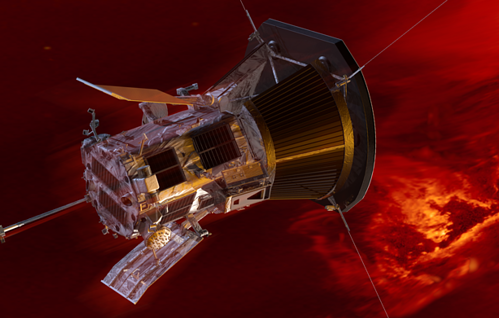According to experts, the results of the analysis indicate that the base of the solar plasma emission is very different in properties from all other parts of itTASS, February 3.
/tass/. The American solar probe Parker Solar Probe flew through the base of the coronal ejection for the first time in history and received the first information about the properties of its matter during one of the approaches of this device to the Sun. The results are published in the Astrophysical Journal.
"For the first time, we measured the properties of particles and fields in the vicinity of the base of the coronal ejection through which the Parker Solar Probe passed during its approach to the Sun. At that moment, the spacecraft was only 14 solar radii from the surface of the sun. The results of these measurements suggest that the base of the solar plasma ejection is very different in properties from all other parts of it," the researchers write.
The Parker Solar Probe (PSP) mission was launched into space in August 2018 to solve one of the most ambitious tasks in the history of astronomy and cosmonautics - approaching the Sun at the minimum possible distance: approximately six million kilometers. Eventually, the work of the PSP will be completed by immersion in the incandescent atmosphere of the luminary, which will happen, as scientists expect, in the middle of this decade.
According to current NASA plans, this device will fly through the corona of the luminary 24 times, gradually approaching the surface of the Sun. Parker Solar Probe is equipped with a thermal shield made of carbon fiber material with a thickness of 11 centimeters and a width of several meters, which will protect it from destruction during these meetings with the luminary.
The first flight of the probe through the coronal ejection
The scientific team of the mission, led by David McComas, a professor at Princeton University (USA), discovered during the analysis of data collected during the tenth approach of the PSP to the Sun in November 2021, that as part of this event, the probe flew through the base of the coronal plasma ejection and spent about two hours inside. Similar emissions of solar matter often generate geomagnetic storms, and also pose a threat to the orbital grouping of satellites in Earth orbit.
According to astronomers, the "rendezvous" of the American probe and the coronal ejection gave scientists a unique opportunity to study the structure of clusters of solar plasma ejected from the atmosphere of the luminary as a result of complex processes in its magnetic field. Of particular value to the researchers was the fact that the Parker Solar Probe encountered a coronal ejection at a minimum distance from the Sun, even before the structure of the solar plasma cloud could change as a result of its interactions with the interplanetary medium.
Scientists have found that heavy and light low-energy ions, which are usually present in the solar wind and in the head of the ejection, are almost completely absent inside the ejection base. In addition, astronomers found no sharp differences in the strength, direction and other properties of the magnetic field at the boundary between open space and the ejection base, which is also not typical for other studied manifestations of solar activity.
While scientists cannot explain these anomalies, however, they suggest that they are potentially related to the fact that the Parker Solar Probe flew only along the edge of the ejection base and did not cross its central parts. New PSP flights through the vicinity of the Sun will give a more accurate answer to this question, summed up Professor McComas and his colleagues.

